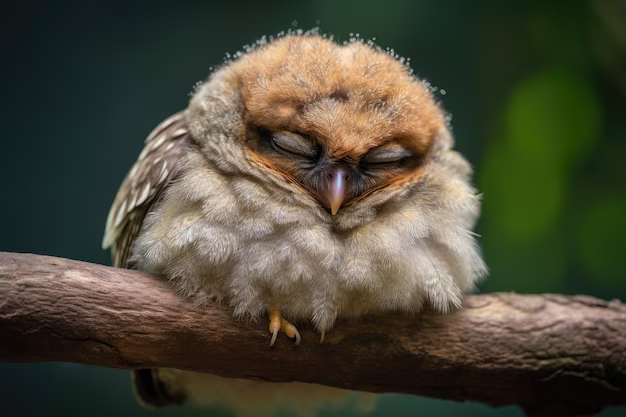If you’ve ever seen a picture of a baby owl fast asleep, you know just how adorable and captivating these little creatures can be. With their fluffy feathers, oversized heads, and sleepy expressions, baby owls (known as owlets) have captured the hearts of wildlife lovers around the world.
But beyond their cuteness, the way baby owls sleep is surprisingly unique and fascinating — from their posture to their biological adaptations. In this post, we’ll explore everything you need to know about baby owl sleeping habits, including the science behind their naps and some fun facts that might just make you fall in love with owlets even more.
Why Baby Owls Sleep Differently
One of the most endearing facts about baby owls is how they sleep on their stomachs with their heads turned to the side. This unusual sleeping position is due to one important reason: their heads are too heavy!
Owls are born with large heads to accommodate their powerful eyes and brains. In baby owls, these heads are disproportionately large compared to the rest of their tiny, developing bodies. Since their neck muscles aren’t strong enough yet, owlets can’t hold their heads upright for long periods while resting.
So, instead of sitting upright like adult owls, baby owls will often lie down flat — belly-down, wings tucked in, and head turned to the side, fast asleep.
Where Do Baby Owls Sleep?
In the Nest
During the first few weeks of life, owlets sleep in their nest — typically in tree cavities, cliff ledges, or man-made nesting boxes. They spend most of their time sleeping, growing, and being fed by their parents.
On Branches (Once Older)
As they grow and begin to fledge (leave the nest), young owls start perching on branches. At this stage, they begin to sleep more like adults: upright, with their heads tucked back under their wings.
But even then, they might occasionally lie down to nap if they’re tired — and it’s still just as adorable.
How Long Do Baby Owls Sleep?
Baby owls sleep a lot — up to 16 to 20 hours a day, especially during the early stages of development. Their bodies are growing rapidly, and sleep is essential for brain development, feather growth, and overall health.
Much like human infants, owlets need long and frequent naps to support their growth.
Are Baby Owls Nocturnal?
Yes, owls are naturally nocturnal, but baby owls don’t follow a strict day-night schedule right away. While adult owls are active mostly at night, baby owls often sleep in short bursts throughout the day and night until they mature and develop a more nocturnal rhythm.
This irregular sleep pattern gradually changes as their internal biological clocks mature.
Fun Facts About Baby Owl Sleep
🦉 They Can Sleep With One Eye Open: Like many birds, owls are capable of unihemispheric slow-wave sleep, which allows them to rest one half of their brain while keeping the other alert. This helps them stay vigilant even while sleeping.
🦉 Their Feet Lock While They Sleep: Owls have a special tendon-locking mechanism in their toes. This means they can perch on branches and sleep without falling, even when completely relaxed.
🦉 They Sometimes Snore or Chirp in Their Sleep: Observers have reported that baby owls may make soft noises, twitch, or even chirp while sleeping — similar to dreaming in mammals.
Why Are Sleeping Baby Owls So Popular Online?
A viral image of a baby owl sleeping on its stomach with its legs stretched out and eyes shut took the internet by storm a few years ago — and since then, people have become fascinated with these sleepy fluffballs.
These images serve as a reminder of the innocence and wonder of wildlife. Seeing a vulnerable, peaceful creature resting so naturally has a calming, heartwarming effect on people — making it a favorite subject for nature photographers and social media.
Conclusion
Baby owl sleeping habits are more than just adorable — they offer a glimpse into the early life of one of nature’s most iconic birds. From belly flops to branch naps, these sleepy owlets have evolved unique ways to rest and grow into the majestic, silent hunters we know as adult owls.



